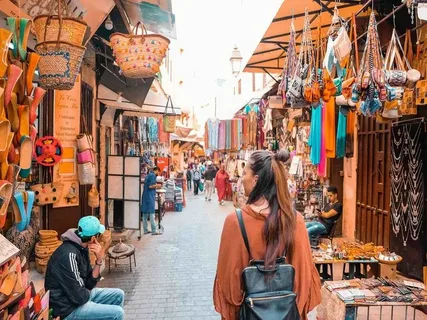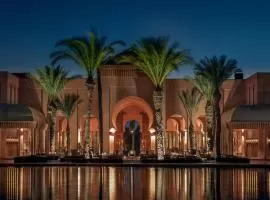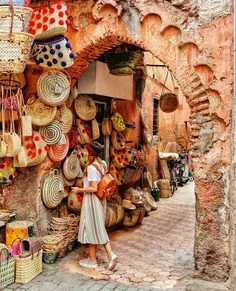Unique places to visit in Morocco-morocco itinerary trips
unique Places to Visit from Casablanca to Marrakech: 12-Day Morocco Itinerary
-Day 1: Arrival in Casablanca
– Highlights: Hassan II Mosque, Corniche
– Details: Begin your Moroccan adventure in the bustling metropolis of Casablanca, the economic heart of the country. After arriving, visit the Hassan II Mosque, one of the largest and most ornate mosques in the world. This architectural marvel is perched on the edge of the Atlantic Ocean, with a minaret that soars over 200 meters high. The mosque’s intricate mosaics, carved stone,
and glass floors revealing the ocean below are truly breathtaking. Afterward, take a leisurely stroll along the Corniche, a coastal promenade that offers beautiful ocean views and a glimpse into modern Moroccan life with its cafes, restaurants, and seaside resorts.
-Day 2: Casablanca to Chefchaouen
– Highlights: Chefchaouen’s Blue Medina
– Details: On your second day, depart Casablanca and journey north to the enchanting town of Chefchaouen, nestled in the Rif Mountains. This picturesque city is famed for its striking blue-washed buildings and streets, creating a serene and almost otherworldly atmosphere.
Spend the afternoon wandering through the medina, where every turn reveals a new shade of blue, along with quaint cafes, artisan shops, and friendly locals. The town’s unique color scheme is said to have spiritual significance, and as you explore, you’ll be immersed in its tranquil ambiance. Don’t miss the opportunity to visit the Kasbah, a restored fortress offering panoramic views of the city and surrounding mountains.
-Day 3: Chefchaouen to Fes
– Highlights: Volubilis, Meknes, Fes
– Details: After breakfast in Chefchaouen, embark on a scenic drive towards Fes, with fascinating stops along the way. Your first stop is at the ancient Roman city of Volubilis, a UNESCO World Heritage site. Here, you can explore remarkably well-preserved ruins, including intricate mosaics, grand arches, and remnants of Roman houses that offer a glimpse into the past.
Next, visit the imperial city of Meknes, known for its massive gates, palaces, and the historic Bab Mansour gate, one of the grandest in Morocco. Meknes provides a perfect blend of history and charm, with fewer tourists than other cities. Continue your journey to Fes, arriving in the evening, where the city’s rich history and culture await exploration.
-Day 4: Fes City Tour
– Highlights: Fes Medina, Al Quaraouiyine University, Tanneries
– Details: Day four is dedicated to exploring the cultural and spiritual heart of Morocco, Fes. Begin your tour in the ancient Fes el-Bali medina, a UNESCO World Heritage site and one of the largest car-free urban areas in the world. The medina is a maze of narrow streets filled with souks, historical sites, and religious schools.
Visit the Al Quaraouiyine University, founded in 859 AD and recognized as the oldest continuously operating university in the world. Another must-see is the Chouara Tannery, where you can observe traditional leather-making processes that have remained unchanged for centuries. The vibrant colors and bustling atmosphere of the tanneries provide a sensory experience like no other. End your day by exploring more of the medina, including its ornate madrasas (Islamic schools) and hidden courtyards.
-Day 5: Fes to Merzouga
– Highlights: Middle Atlas Mountains, Ifrane, Azrou, Merzouga
– Details: On day five, leave Fes and travel through the diverse landscapes of the Middle Atlas Mountains towards the Sahara Desert. Your first stop is Ifrane, a town often referred to as “Little Switzerland” due to its alpine-style architecture and clean, well-kept streets. It’s a stark contrast to the usual Moroccan scenery and a popular ski destination in winter.
Continue through the cedar forests of Azrou, where you might spot Barbary macaques, the only species of monkey native to Morocco. The journey then takes you through lush valleys and dramatic mountain passes before descending into the arid plains leading to Merzouga, located at the edge of the Sahara Desert. Upon arrival, prepare for an unforgettable desert experience, including a camel trek into the dunes and a night under the stars in a luxury desert camp.
-Day 6: Discover Merzouga
– Highlights: Sahara Desert, Camel Trek, Nomad Visit
– Details: Spend day six fully immersed in the beauty and tranquility of the Sahara Desert. Start your day early with a camel trek to witness the sunrise over the Erg Chebbi dunes, an awe-inspiring sight as the first light of day transforms the sand into a palette of gold and pink hues.
After breakfast, explore the desert further, visiting nearby oases, fossil beds, and possibly a traditional nomadic family, where you can learn about their way of life in this harsh environment. Enjoy the unique experience of sandboarding down the dunes or simply relax in the peaceful surroundings of the desert. As night falls, gather around a campfire for a traditional Berber dinner, followed by live music and stargazing in the clear desert sky.
-Day 7: Merzouga to Dades Valley
– Highlights: Todra Gorge, Dades Valley
– Details: After a magical night in the desert, continue your journey to the Dades Valley. En route, stop at the Todra Gorge, one of Morocco’s most dramatic natural wonders. The gorge’s towering limestone cliffs, reaching heights of up to 400 meters, create a narrow, winding canyon that is popular with rock climbers and trekkers.
After exploring the gorge, proceed to the Dades Valley, often called the “Valley of a Thousand Kasbahs” for its numerous ancient fortresses that dot the landscape. The valley is also known for its scenic beauty, with winding roads, lush green oases, and striking red rock formations. Settle into your accommodation for the night, surrounded by the valley’s serene and picturesque landscapes.
-Day 8: Trekking in Dades Valley
– Highlights: Dades Valley, Berber Villages
– Details: Day eight is all about exploring the rugged beauty of the Dades Valley on foot. Set out on a guided trek through the valley, where you’ll traverse dramatic rock formations, fertile oases, and terraced fields. Along the way, visit traditional Berber villages that have remained largely unchanged for centuries.
Here, you’ll have the opportunity to interact with local families, gaining insight into their daily lives and customs. Enjoy a traditional Berber lunch in a local home, where you’ll be treated to warm hospitality and delicious, homemade Moroccan cuisine. The trek offers not only stunning natural beauty but also a deep cultural experience as you connect with the people who call this valley home.
-Day 9: Dades to Imlil
– Highlights: High Atlas Mountains, Imlil
– Details:On day nine, depart the Dades Valley and travel to Imlil, a small village in the High Atlas Mountains. Imlil serves as the gateway to Mount Toubkal, North Africa’s highest peak, and is surrounded by breathtaking mountain scenery.
The journey to Imlil takes you through winding mountain roads, offering spectacular views along the way. Upon arrival, take some time to explore the village, where you’ll find traditional stone houses, terraced fields, and a peaceful atmosphere. Imlil is the perfect place to experience the beauty of the High Atlas Mountains and the warmth of Berber hospitality. Prepare for a serene stay in this picturesque mountain village.
-Day 10: Imlil to Marrakech
– Highlights: High Atlas Mountains, Marrakech
– Details: Start your day with a morning hike around Imlil, soaking in the fresh mountain air and stunning views of the surrounding peaks. Afterward, bid farewell to the mountains and make your way to the vibrant city of Marrakech.
As you descend from the High Atlas, you’ll notice the landscape gradually changing from green mountains to the arid plains of Marrakech. Upon arrival, check into your traditional riad and relax before heading out to explore the city. Marrakech is known for its rich history, colorful markets, and lively atmosphere, making it a stark contrast to the tranquility of the mountains. Spend your evening in the bustling Jemaa el-Fnaa square, where the city truly comes alive with street performers, food stalls, and musicians.
-Day 11: Marrakech City Tour
– Highlights: Koutoubia Mosque, Bahia Palace, Saadian Tombs, Jemaa el-Fnaa
– Details: Day eleven is dedicated to discovering the many wonders of Marrakech. Begin with a visit to the Koutoubia Mosque, the largest mosque in Marrakech, known for its impressive minaret that dominates the city’s skyline. Next, explore the Bahia Palace, a stunning example of Moroccan architecture with its lush gardens, intricate tile work, and grand courtyards.
Continue to the Saadian Tombs, a historic royal necropolis that dates back to the 16th century, hidden for centuries and rediscovered in 1917. Afterward, delve into the lively souks of Marrakech, where you can shop for traditional crafts, spices, and textiles. The day concludes in Jemaa el-Fnaa, where the city’s energy is at its peak. Enjoy the sights and sounds of the square, where locals and tourists alike gather to experience the vibrant culture of Marrakech.
-Day 12: Transfer to Airport
– **Highlights:** Farewell to Morocco
– Details: On your final day in Morocco, enjoy a leisurely breakfast at your riad before preparing for
Unique places to visit in Morocco-morocco itinerary trips
- Highlights of the Itinerary:
- Casablanca: Modern city with iconic landmarks like Hassan II Mosque.
- Rabat: Capital city with historical sites and a coastal vibe.
- Chefchaouen: The picturesque blue city in the Rif Mountains.
- Fes: Ancient city with a rich history and the world’s oldest university.
- Merzouga: Gateway to the Sahara, offering a magical desert experience.
- Dades Gorge: Breathtaking natural scenery and Berber culture.
- Marrakech: Vibrant city with bustling souks, palaces, and gardens.
FAQ: 12-Day Morocco Itinerary from Casablanca to Marrakech
1. What is the best time of year to take this 12-day Morocco itinerary?
- Answer: The best times to visit Morocco are during the spring (March to May) and fall (September to November) when the weather is mild and pleasant. During these months, the temperatures are comfortable for exploring cities, trekking in the Atlas Mountains, and enjoying the desert without extreme heat or cold.
2. How physically demanding is this itinerary?
- Answer: This itinerary includes a mix of leisurely sightseeing and some moderate physical activity, such as trekking in the Dades Valley and camel riding in the Sahara Desert. The trek in the Dades Valley is particularly noteworthy but is suitable for most travelers with a reasonable level of fitness. If you have any concerns, you can discuss adjustments with your tour guide.
3. What kind of accommodation can I expect on this tour?
- Answer: Accommodations during this itinerary range from luxury desert camps in Merzouga to traditional riads in cities like Fes and Marrakech. In smaller towns and villages, you will stay in charming guesthouses or kasbahs that offer an authentic Moroccan experience. All accommodations will provide modern amenities, but the exact standard may vary depending on the location.
4. What should I pack for this 12-day trip?
- Answer: Pack light, breathable clothing for daytime, as temperatures can be warm, especially in the desert. Bring layers for cooler evenings, particularly in the mountains and the desert. Comfortable walking shoes are essential for city tours and trekking. Don’t forget sun protection (hat, sunglasses, sunscreen) and a reusable water bottle. If you plan to visit mosques, bring modest clothing that covers your shoulders and knees.
5. Is this itinerary suitable for families with children?
- Answer: Yes, this itinerary can be adapted for families with children. The camel ride in Merzouga and the visits to cities like Marrakech and Fes can be exciting for children. However, parents should consider the trekking activities and the long travel distances between some destinations. It’s a good idea to discuss any special needs or preferences with your tour operator to ensure a family-friendly experience.
6. How much time will be spent driving between destinations?
- Answer: Morocco is a large country, and this itinerary covers a significant distance, so there will be several long drives, particularly on days 2 (Casablanca to Chefchaouen), 5 (Fes to Merzouga), and 7 (Merzouga to Dades Valley). However, the drives are broken up with interesting stops, and the scenery along the way is often stunning, making the journey part of the adventure.
7. Are meals included in this itinerary?
- Answer: Breakfast is typically included each day, and some tours might include dinners, particularly at the desert camp in Merzouga and other more remote locations. Lunches are often not included, giving you the flexibility to choose where to eat. Morocco has a rich culinary tradition, so there will be plenty of opportunities to enjoy local dishes at cafes, restaurants, and markets along the way.
8. Will I have time for shopping in the souks?
- Answer: Yes, the itinerary includes ample time to explore the souks, particularly in Fes and Marrakech, where you can shop for traditional Moroccan crafts, spices, textiles, and souvenirs. Your guide can also help you find reputable vendors and negotiate prices.
9. What language is spoken in Morocco, and will I need to know it?
- Answer: The official languages of Morocco are Arabic and Berber, with French widely spoken, especially in business, government, and tourist areas. English is also increasingly spoken, particularly in major cities and tourist destinations. While it’s helpful to know a few basic phrases in Arabic or French, you can get by with English, as guides and hotel staff in tourist areas are generally fluent.
10. Is Morocco safe for tourists?
- Answer: Morocco is generally considered safe for tourists. The country has a stable political environment, and the government takes tourism seriously, ensuring the safety of visitors. However, like any destination, it’s important to stay aware of your surroundings, avoid isolated areas after dark, and follow any advice from your tour guide or local authorities. Scams and petty theft can occur in busy tourist areas, so it’s advisable to keep your belongings secure.











